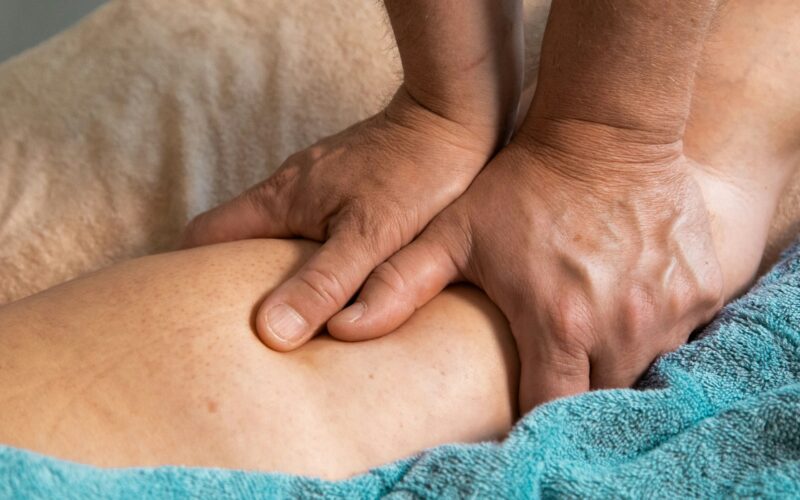Leg cramps can be a bothersome and sometimes debilitating occurrence, disrupting daily routines and causing considerable discomfort. Despite their sudden and unexpected nature, these cramps are typically harmless, yet understanding their root causes is crucial for effective management and prevention. While they are usually harmless, understanding the underlying causes can help manage and prevent them effectively, offering much-needed leg cramp relief. This article dives deeper into the multifaceted factors contributing to leg cramps, equipping you with valuable insights to combat them effectively and find much-needed relief.
Dehydration:
One of the primary triggers for leg cramps is dehydration. When the body lacks adequate fluids, electrolyte imbalances can ensue, leading to muscle spasms and cramping. Maintaining proper hydration levels is imperative by consuming ample water throughout the day, particularly during physical exertion or in hot weather conditions. Furthermore, incorporating electrolyte-rich beverages such as sports drinks or coconut water can help fill lost electrolytes and reduce the likelihood of experiencing cramps.
Electrolyte Imbalance:
Electrolytes, including potassium, magnesium, and calcium, play pivotal roles in muscle function. Deficiencies in these essential minerals can predispose individuals to cramps. To mitigate this risk, it’s essential to incorporate potassium-rich foods such as bananas, leafy greens, and avocados into your diet. Similarly, foods abundant in magnesium, such as nuts, seeds, and whole grains, can support optimal muscle function and alleviate cramping tendencies. Additionally, consider discussing electrolyte supplements with a healthcare professional if you have chronic deficiencies or difficulty obtaining enough from your diet alone.
Overexertion:
Engaging in rigorous physical activity or pushing your muscles beyond their limits can strain them, increasing the likelihood of experiencing these cramps. To prevent this, listening to your body’s cues and avoiding overexertion is crucial. Incorporating adequate rest intervals during workouts and employing proper stretching techniques can help alleviate muscle tension and minimise the risk of cramps. Moreover, warming up before exercise and gradually increasing workout intensity can prepare your muscles and reduce the likelihood of cramping. Remember, moderation is key, and pushing too hard too quickly can result in overuse injuries and increased susceptibility to cramps.
Poor Blood Circulation:
Impaired circulation can hinder the delivery of nutrients and oxygen to the muscles, resulting in cramping. Prolonged periods of sitting or standing, wearing constrictive clothing, or underlying health conditions like peripheral artery disease can contribute to poor circulation. To combat this, integrating regular exercise routines such as walking or swimming into your lifestyle can improve blood flow and alleviate cramps. Additionally, avoiding crossing your legs while seated and elevating your legs when resting can help promote circulation in the lower extremities. Compression stockings or socks may also be recommended for individuals with chronic circulation issues to aid in improving blood flow and reducing cramping.
Nerve Compression:
Nerve compression, often stemming from conditions like spinal stenosis or herniated discs, can manifest as radiating pain and muscle spasms in the legs. Seeking medical evaluation and addressing the underlying cause is paramount in managing and preventing cramps associated with nerve compression. Physical therapy, medications, and lifestyle modifications may be prescribed to alleviate symptoms and enhance the quality of life. Additionally, maintaining good posture and avoiding long periods of sitting or standing can help alleviate pressure on the nerves and reduce the incidence of cramps. In serious cases, surgical intervention may be necessary to relieve nerve compression and alleviate associated cramping.
Medications and Medical Conditions:
Some medications, such as diuretics or statins, can deplete electrolytes or disrupt muscle function, elevating the risk of these cramps. Moreover, medical conditions like diabetes, thyroid disorders, or kidney disease can predispose individuals to cramping episodes. Speaking with a healthcare expert to review medications and manage underlying health conditions is crucial in minimising the occurrence of leg cramps. Regular monitoring of blood sugar levels, thyroid function, and kidney function can aid in identifying and addressing potential triggers for cramping. Additionally, adjusting medication dosages or exploring alternative treatment options may be necessary to mitigate the risk of cramping while managing chronic health conditions effectively.
Summing it Up:
Leg cramps can be disruptive and uncomfortable, but understanding their various causes empowers individuals to take proactive steps in managing and preventing them, ultimately providing much-needed leg cramp relief. You can substantially reduce the frequency and severity of these cramps by prioritising hydration, maintaining electrolyte balance, avoiding overexertion, promoting circulation, addressing nerve compression, and managing medications and medical conditions. Remember to heed your body’s signals, prioritise self-care, and seek medical attention if cramps persist or significantly impact your daily life. With a proactive approach, you can break free from the grip of these cramps and enjoy enhanced comfort and mobility in your everyday activities.




